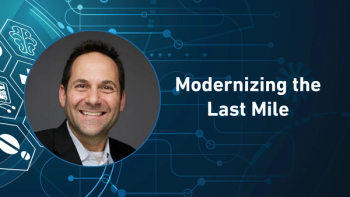
A Behind-the-Scenes Look at Drug Price Markups
New England Journal of Medicine study provides a breakdown of how hospitals—especially those that qualify for discounts under the federal 340B Drug Pricing Program—are able to make a profit off insurer pharmaceutical expenditures.
One major component of Pharmaceutical Commerce’s coverage revolves around drug pricing in the pharma industry. With drug prices in the United States reportedly being higher than any other nation, it opens the floodgates up to affordability issues that can hinder patients’ access to medication.
A study published in The New England Journal of Medicine (NEJM)1 sought to explore these challenges—including how hospitals impose price markups—by using deidentified patient data from the 2020-2021 from Blue Cross Blue Shield (BCBS) Axis, which is a data warehouse containing claims of about 50 million people nationwide. Claims were narrowed down to include people 18-64 years of age who were either covered by employment-based or individually purchased insurance, but this does not include any claims from patients who were covered by Medicaid or Medicare managed-care plans.
Investigators decided to focus on a total of 57 products representing the priciest physician-administered drugs, considering volume of prescriptions and unit prices in the process. These were pulled from a list that had been set aside by a large insurer for the pursuit of “cost-reduction strategies.” The breakdown was as follows:
- Thirty-six infused drugs that treat oncologic conditions
- Eleven for blood-cell deficiency disorders
- Ten for inflammatory conditions
Unlike patient-administered medications, infused drugs, which are administered by physicians, are directly sold by wholesalers and manufacturers to group purchasing organizations, hospitals, and physician practices. The former, the purchasing organizations, often negotiate discounts with manufacturers, and in this particular study, the reflected prices represent the amount that the insurer paid, and what the physician practice or hospital collected.
The study authors noted that there are usually two kinds of prices that are charged for these infused medications, both of which are distributed to physician practices and hospitals. First, providers buy the drugs from said wholesalers and manufacturers for an “acquisition price,” an amount that was estimated by a Centers for Medicare and Medicaid Services (CMS) Medicare Part B calculation that determines average sales price because it was not reflected on the insurance claim. In order to make a profit, providers often charge a high reimbursement price to the patient’s insurer. The provider organization makes revenue as a result of the difference between the reimbursement and acquisition price. CMS pays hospitals/physician practices the value of the average sales price, plus an additional 6% margin that covers inventory and handling costs; this rate is the same for the same drug.
The investigators noted that with Medicaid’s 340B Drug Pricing Program, which requires manufacturers to sell certain outpatient drugs to clinics so that patients can have access to these expensive drugs, approximately one-third of hospitals and outpatient departments are eligible for discounts on the acquisition price they pay. According to a CMS estimate cited by the authors, the acquisition prices that are paid to these drug manufacturers by hospitals qualify for 340B discounts equal to 65% of the average sales price, so for the sake of consistency, the investigators used a value of 0.65 times the average sales price (view Table 1 below). They then computed the ratio of the reimbursement price to the acquisition price for each drug, which was measured as the median markup (and interquartile range) across hospitals eligible for 340B discounts, along with noneligible hospitals, and physician practices.
This was calculated for 404,443 US patients who had a total of 4,727,189 drug-infusion visits. Results indicated that:
- Median price markup for 340B discount-eligible hospitals was 3.08, with an interquartile range of 1.87 to 6.38.
- Price markups 340B discount qualified hospitals were 6.59 times (95% confidence interval [CI], 6.02 to 7.16), which is as high as those in independent physician practices.
- Price markups at noneligible hospitals were 4.34 times (95% CI, 3.77 to 4.90) as high as those in physician practices.
- In terms of profits, hospitals that qualified for 340B discounts kept 64.3% of insurer drug expenditures, while hospitals that were not eligible for 340B discounts retained 44.8%. Independent physician practices kept 19.1%.
Given these results, the authors concluded that “this study showed that hospitals imposed large price markups and retained a substantial share of total insurer spending on physician-administered drugs for patients with private insurance. The effects were especially large for hospitals eligible for discounts under the federal 340B Drug Pricing Program on acquisition costs paid to manufacturers.”
Reference
1. Robinson JC, Whaley C, Dhruva SS. Hospital Prices for Physician-Administered Drugs for Patients with Private Insurance. N Engl J Med. January 25, 2024.
Newsletter
Stay ahead in the life sciences industry with Pharmaceutical Commerce, the latest news, trends, and strategies in drug distribution, commercialization, and market access.




